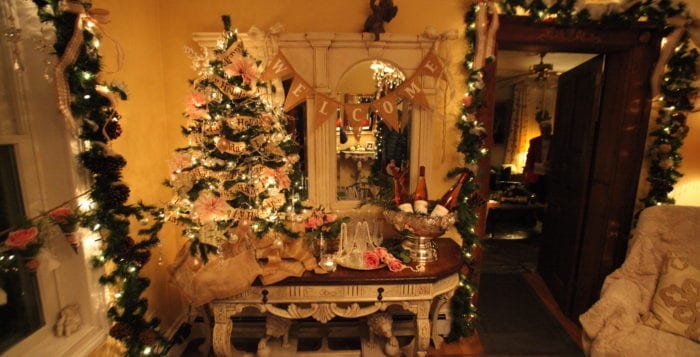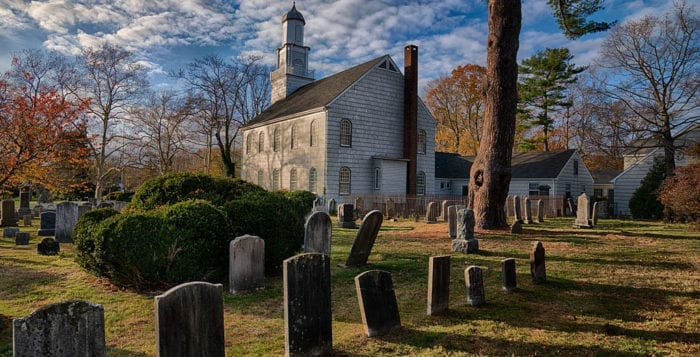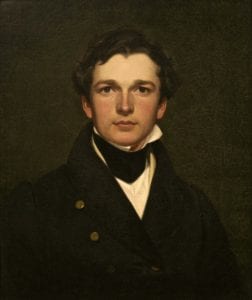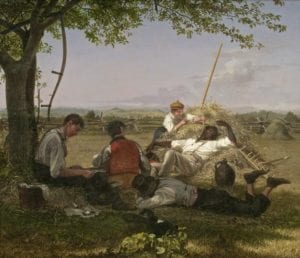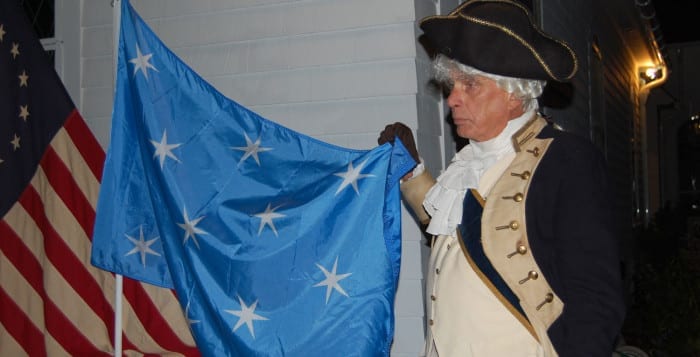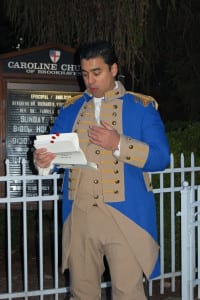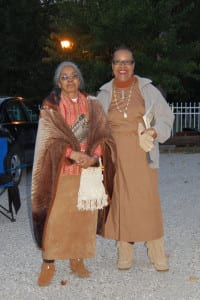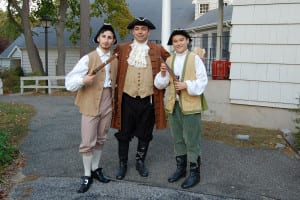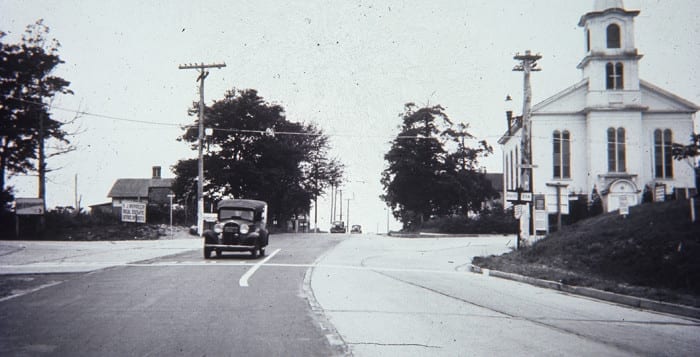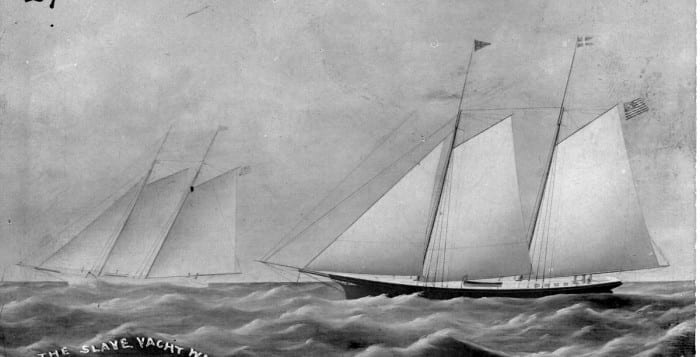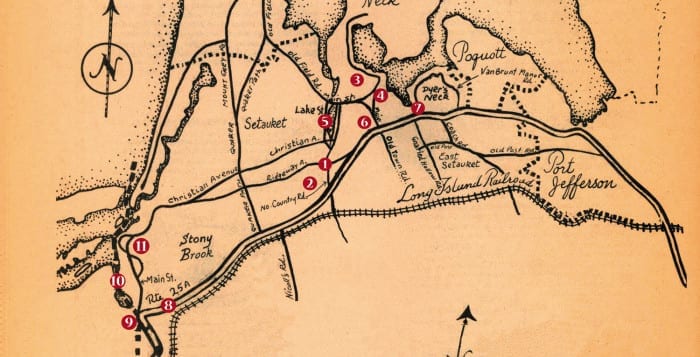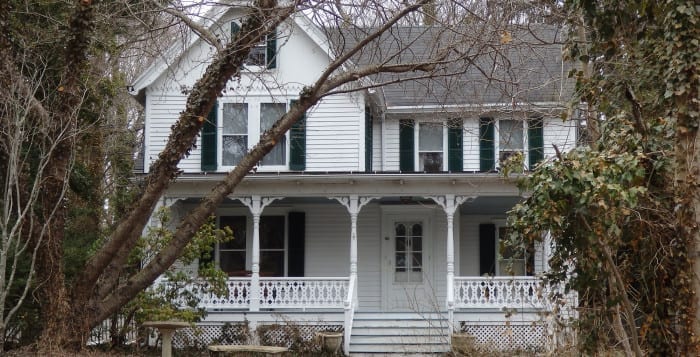By Melissa Arnold
It’s hard to live in the Three Village area without noticing the beautiful neighborhoods around us. And it’s easy to fantasize about the ornate period homes. Each year, local residents team up with the Three Village Historical Society to offer visitors from across Long Island a rare, festive peek at a few of them with a Candlelight House Tour. This wonderful event, which will be held on Dec. 2 and 3 this year, has been a mainstay of the North Shore’s holiday season for almost 40 years. But it began as just a simple fundraiser.

At the end of the 1970s, the Three Village Historical Society was meeting in the Setauket Neighborhood House on Main Street. The building wasn’t in the best shape, however, and members of the society starting brainstorming on ways to repair it. It was Eva Glaser who came up with a unique idea: What if they charged a small fee to take visitors inside the area’s historic homes? Elaborate holiday decorations would make the tours even more interesting, she thought. Those first tours of 1979 were a great success, and the event is now one of the historical society’s biggest annual fundraisers. Proceeds will benefit community and in-school educational programs.
“A lot of people use [the tour] as a kickoff for the holiday season since it’s always the first weekend in December,” said tour co-chair Patty Yantz. “It’s wonderful seeing families all come out together, and then go out to dinner or start their shopping for the holidays. We see people from all generations come together.” The tour features different homes every year, so you’ll never get the same experience twice. The event is so popular that Three Village homeowners are often the first to approach the society to get involved. “People are so generous in their willingness to open up their homes and be a part of the tour. We take time looking at each house on the tour and then look at the elements that they might have in common that could lead to a theme,” Yantz explained.
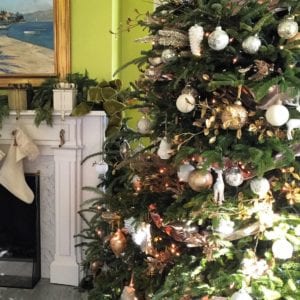
This year’s theme, Visions of Historic Setauket: A Look Back in Time, will feature five decorated homes. Gallery North and the historical society’s building will be decorated as well. “Setauket has a perfect little historic enclave near the [Frank Melville Memorial] park, and we have a tremendous amount of photos and documents from the area in our archives,” said Patty Cain, also a tour co-chair. “The houses in the tour all circle around the [park’s] pond, which makes it possible for us to have a walking tour this year. We were very lucky.”
The participating homeowners work with volunteer professional decorators to deck the halls for the tour. Afterward, they can keep those decorations to use for years to come, Cain said. She added that Eva Glaser, the inspiration behind the original house tours, will be participating this year. Tour participants have three different times to choose from, each offering a unique experience.
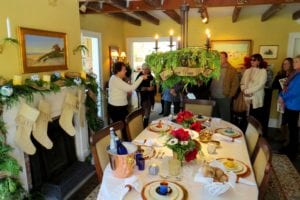
The darkness of Friday evening makes the lights and luminarias on the tour especially pretty. At each stop, hors d’oeuvres and wine will be served courtesy of local restaurants, followed by a reception at the Old Field Club in Setauket. Those hoping for an early start can take a Saturday morning tour that begins with breakfast at the club. There’s also an option for the tour alone in the afternoon. Each tour allows visitors the freedom to park wherever they’d like, and to visit the homes in any order.
Guides will greet visitors at each home and take them through in small groups to keep the experience intimate. Once inside, there’s a specific path to follow, where guides will explain the special elements of each room. In addition, the tour admission ticket is actually a historical booklet full of information and photos. Yantz said that many families keep these booklets over the years as both a historical record and memento. Admission to the house tour also includes access to SPIES!, an interactive exhibit about the Culper Spy Ring, and the Chicken Hill: A Community Lost in Time exhibit at the historical society, as well as admission to the Long Island Museum in Stony Brook, Yantz said. “I think the best part about it is hearing all the wonderful comments from people that come out. There’s never been a complaint on the weekend of the tours, and the joy on people’s faces, seeing people come together, is very special. It’s such a positive force in the community,” she said.
The Three Village Historical Society’s 38th annual Candlelight House Tour will be held the evening of Friday, Dec. 2, and the morning and afternoon of Saturday, Dec. 3. Depending on the option you choose, tickets range from $40 to $100 per person. For more information, please call 631-751-3730, email [email protected] or visit www.tvhs.org.

